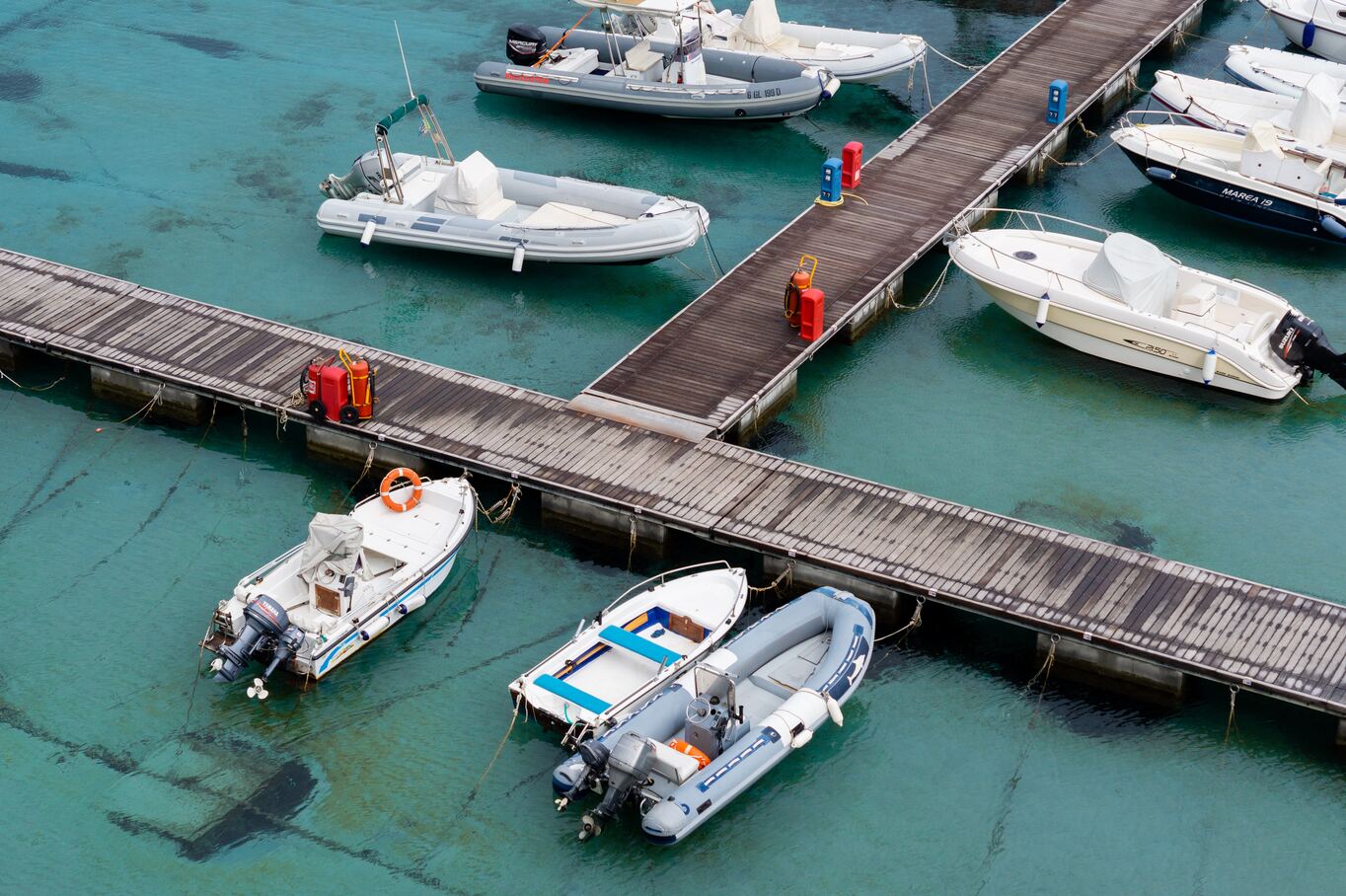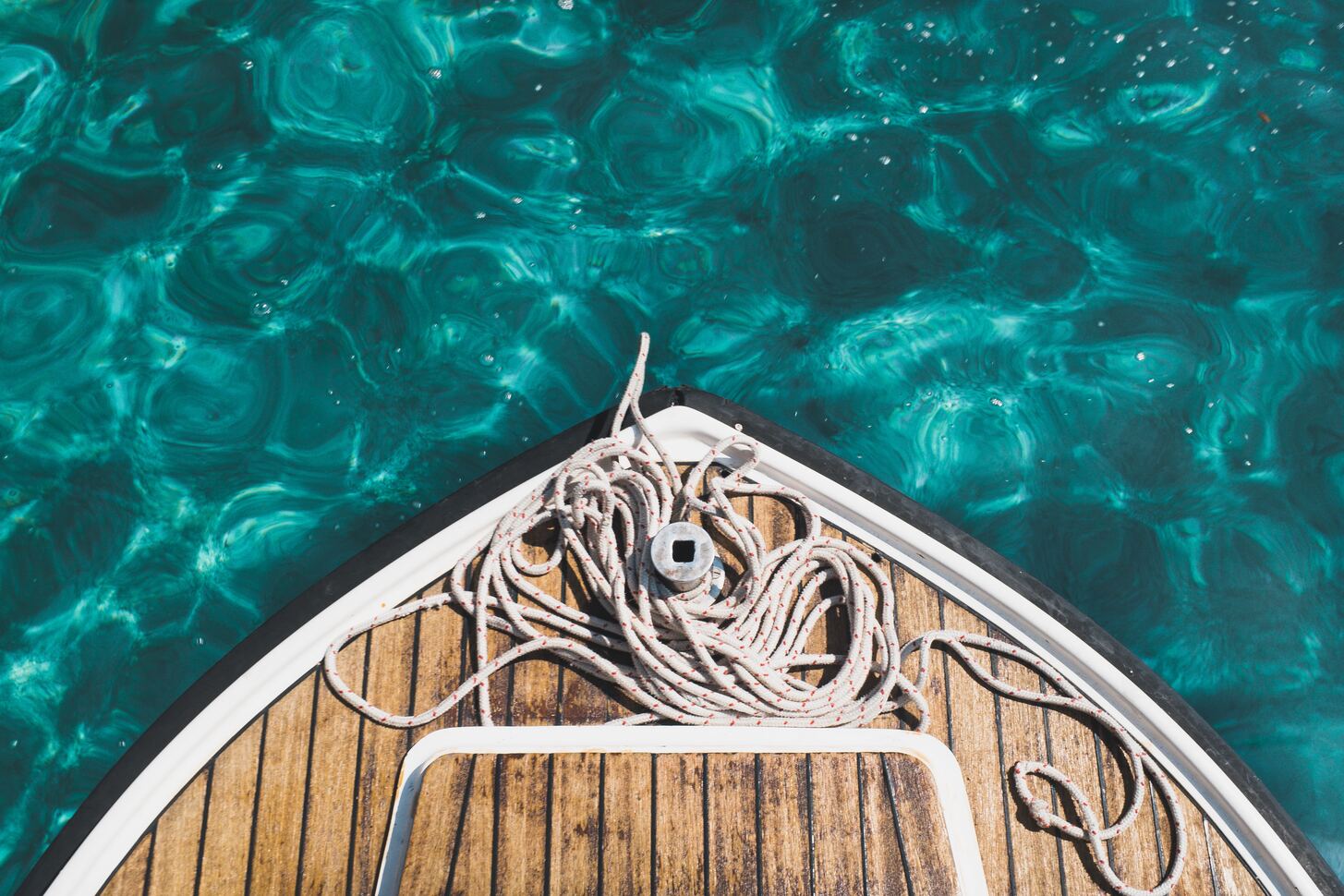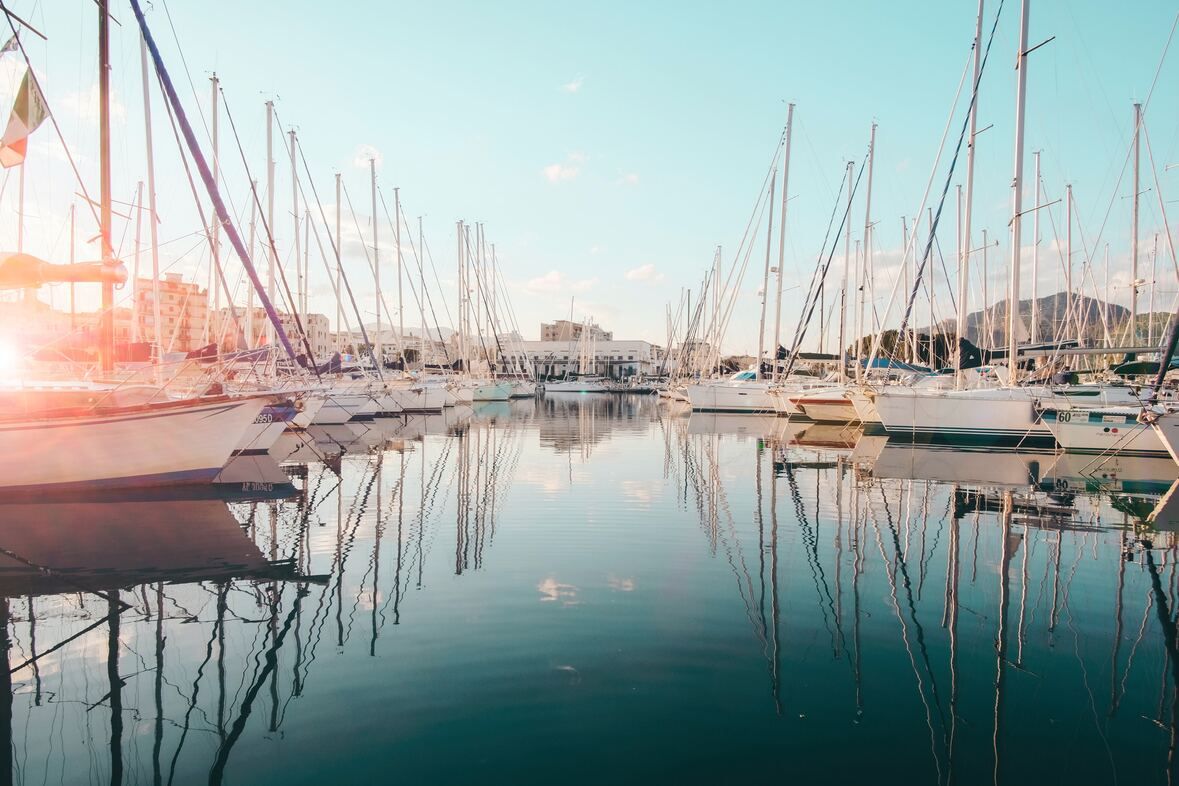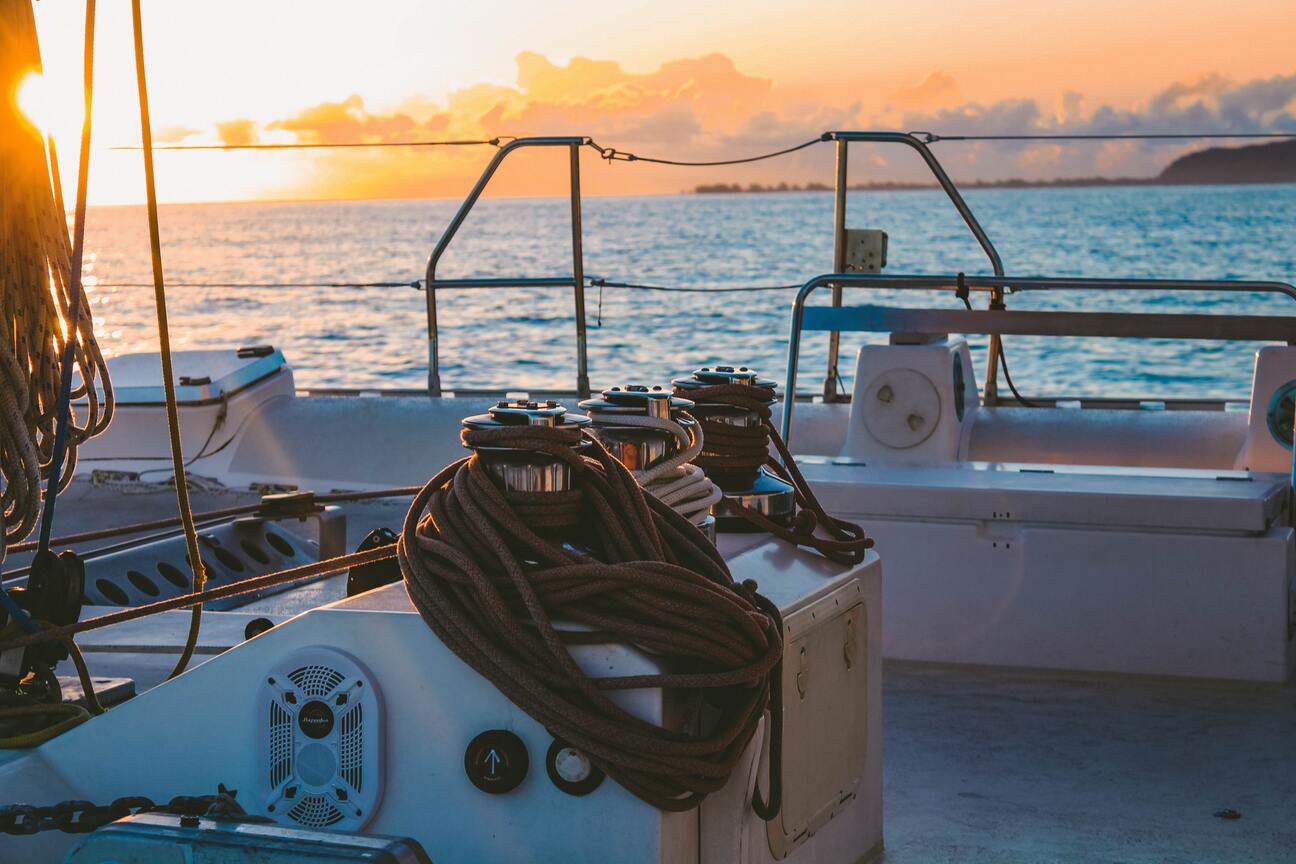A guide to boat moorings
In this guide you'll find out everything you need to know about mooring your boat, whether you own or are thinking of buying or renting one. Securely moor your boat to prevent it from drifting away due to tides or currents, and learn about the different types of moorings, how to moor your boat and how to find the right mooring.




What is a Boat Mooring?
A boat mooring is a device or system used to secure a boat in place, preventing it from drifting away from its desired location. A mooring consists of a permanent anchor, such as a weight or a rock, and a mooring buoy, which is a floating object that is connected to the anchor via a chain or rope.
Types of Moorings
There are different types of boat moorings, each designed for specific water conditions and types of boats. The most common types of boat moorings include:Swing Mooring
Swing mooring is the most basic type of mooring. It consists of a single anchor attached to a buoy, with a chain or rope connecting the buoy to the boat. The boat swings around the anchor with the tide or current, providing a 360-degree range of motion. This type of mooring is best suited for small boats in sheltered waters.Fore and Aft Mooring
A fore and aft mooring, also known as a stern and bow mooring, consists of two anchors, one located at the bow of the boat and the other at the stern. A rope or chain connects each anchor to the boat, which keeps the vessel steady and in place. This type of mooring is best suited for larger boats and boats that are moored in areas with strong currents or tides.Mediterranean Moor
A Mediterranean moor is a mooring style where the boat is docked parallel to a pier or dock. It involves the use of two anchors, one located at the bow and the other at the stern, and ropes or chains that run from the boat to the dock or pier. This type of mooring is best suited for larger boats and boats that are moored in areas with high boat traffic.Mooring Components
Regardless of the type of mooring, several components are essential for securing a boat in place. These components include:Anchors
An anchor is a device that provides a secure point of attachment for the mooring chain or rope. It is a vital component of a mooring system as it keeps the boat from drifting away. The type and size of the anchor required depends on the type of boat and the water conditions where it will be moored.Mooring Lines
Mooring lines are ropes or chains that connect the boat to the mooring system. They are used to keep the boat steady and prevent it from drifting away. The size and number of mooring lines required depends on the type of boat and the water conditions where it will be moored.Buoys
Buoys are floating objects that are attached to the mooring chain or rope. They help to mark the location of the mooring system and provide a point of attachment for the boat's mooring lines.Cleats
Cleats are metal or plastic fittings located on the boat's deck that provide a secure point of attachment for the mooring lines.Fenders
Fenders are inflatable or foam-filled cushions that are placed between the boat and the dock or pier to prevent damage to the vessel.
Methods of Handling Lines
Several methods can be used to handle mooring lines when securing a boat in place. These methods include:Loop Method
The loop method involves making a bight or a loop in the middle of a line, then passing both ends of the line through the loop and around the object being secured. This method is commonly used for securing a boat to a fixed object, such as a dock or pier. The loop method creates a secure hold on the object, but it can be difficult to adjust the tension of the line once it is in place.Cleat Hitch Method
The cleat hitch method is another common way to secure a boat to a dock or pier. This method involves wrapping the mooring line around a cleat on the dock or pier, then tying a half hitch around one of the horns of the cleat. This creates a secure hold on the object, and it is easy to adjust the tension of the line by re-tying the half hitch.Bowline Knot
Finally, the bowline knot is a versatile knot that can be used for a variety of purposes, including securing a boat to a mooring. To tie a bowline knot, make a loop in the end of the line, then pass the end of the line through the loop and around the standing part of the line. Finally, pass the end of the line back through the loop, creating a secure knot that will not slip.How to moor a boat
Moorings can be a great way to keep your boat secure when you are not using it, but they can also be difficult to set up and maintain. Here are some tips for mooring your boat safely and securely:1. Choose the right mooring location
When choosing a mooring location, look for a sheltered area with plenty of room for your boat to move around. Make sure the mooring is located in an area where boats are allowed to anchor. If you're unsure, check with local authorities or fellow boaters.2. Check the bottom conditions
It's important to check the bottom conditions before you set up your mooring. Make sure the bottom is suitable for anchoring or mooring, and that there are no underwater hazards that could damage your boat. If you're not sure, consider getting a professional survey of the area.3. Use the right equipment
Make sure you have the right size and type of anchor or mooring system for your boat, and that it is in good condition. The size and type of anchor or mooring system you need will depend on the size of your boat and the water conditions where you will be mooring. It's important to ensure your equipment is well-maintained and in good working order to keep your boat safe.4. Choose the right mooring lines
Use high-quality mooring lines that are strong enough to hold your boat in place, and that are long enough to allow for changes in water level. It's a good idea to have at least two mooring lines, one at the bow and one at the stern, to keep your boat secure. Consider using nylon rope for your mooring lines as it has good stretch properties and can absorb shock loads.5. Set up your mooring correctly
Proper setup is crucial for a safe and secure mooring. Make sure your anchor or mooring system is properly set up, and that your boat is securely attached to the mooring lines. Use the correct knots to tie your mooring lines, and check the tension regularly to make sure your boat is staying in place.6. Check your mooring regularly
It's important to regularly inspect your mooring to make sure it is still secure and in good condition. Check the condition of your equipment, including the anchor or mooring system, buoys, and mooring lines. Look for signs of wear or damage, and make any necessary repairs or adjustments. Consider checking your mooring after a storm or heavy weather, as conditions can change quickly.
How to find the right mooring
Finding the right mooring can be a challenge, especially if you are new to boating. Here are some tips to help you find the perfect mooring spot for your boat.Decide what type of mooring you need
Before you start your search, decide what type of mooring you need. Do you want a permanent or a temporary mooring? Do you need a mooring with access to shore power and water? Do you prefer a sheltered or an exposed location? Answering these questions will help you narrow down your search.Check with the local authorities
Check with the local authorities to find out about the regulations regarding mooring in the area you plan to boat. Some areas have restrictions on the length of time you can moor your boat, while others require you to obtain a permit or pay a fee.Talk to other boaters
Talking to other boaters is a great way to find out about available moorings in the area. They may know of moorings that are not listed online or may have a mooring that they are looking to rent out.Contact marinas and yacht clubs
Marinas and yacht clubs often have a waiting list for moorings, but it's worth contacting them to find out if they have any available spots. They may also be able to recommend other mooring locations in the area.Consider a boat share or a boat club
If you don't want the hassle of finding and maintaining your own mooring, you may want to consider a boat share or a boat club. Boat shares allow you to own a share of a boat and have access to a mooring spot. Boat clubs offer access to a fleet of boats and moorings for a fee.